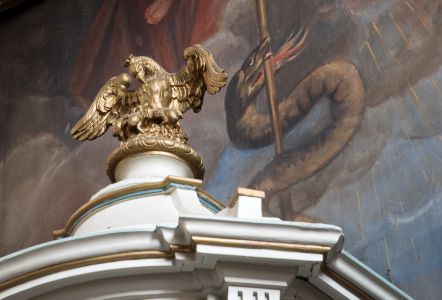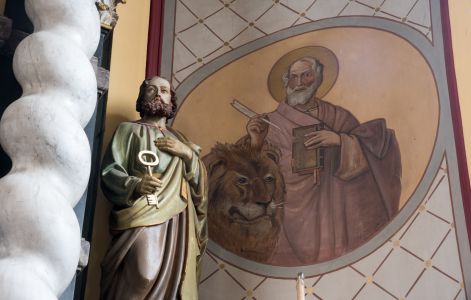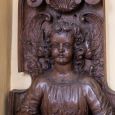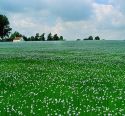Collegiate Church | VII/XVIII | Neoclassical | Catholic Church



Map
Opening hours
01 January - 31 December
Mon 10.00 - 18.00
Tue 10.00 - 18.00
Wed 10.00 - 18.00
Thu 10.00 - 18.00
Fri 10.00 - 18.00
Sat 10.00 - 18.00
Sun 10.00 - 18.00
Guided tour
+32 496 54 96 92
Religious offices
Wednesday : 6 pm
Sunday : 6 pm
Description
The first, already dedicated to saint Peter, was built in 650 on the tomb of Saint Ragenufle, by his parents, Ajus and Aja, great Merovingian lords of the region and close relatives of Blessed Pépin de Landen. Born around 635, Saint Ragenufle refused the beautiful marriage desired by her parents, lived a life of penance in solitude and died of exhaustion on July 14, 650, at the place where today stands her famous fountain, a place of pilgrimage frequented by the faithful.
In 1036, the Lords of Incourt founded a chapter of 12 canons; this institution was established in 1112. Transferred in 1454 to the Saint-Jacques church in Louvain, the Sainte-Ragenufle Chapter was abolished under French rule at the end of the 18th century.
Classical-style church, combining brick and Gobertange stone. The portal is in the Louis XVI style. A two-coloured chronogram is engraved in the lintel of the portal. The church houses a beautiful Baroque-style wooden Christ under the canopy of its façade. The bluestone baptismal font dates from the early 18th century.
KIKIRPA : photo-library online
Photos
Remarkable elements
High altar
The superb 17th century baroque high altar, made of black marble with white marble torsos, has a broken pediment surmounted by a statue of Saint Michael the Archangel knocking down the devil, a painted wooden sculpture presented in 1763 by a Canon of Leuven. It is decorated with a painting of the Virgin and Child, showing the Redeemer's promise and the fate of the devil. Its tabernacle is surmounted by a carved wooden exhibition throne, intended for the adoration of the Blessed Sacrament. The altar is framed by polychrome terracotta statues of the Virgin and Child and St. Peter.
Side altar
The left side altar, in neo-classical style, with a portico-shaped altarpiece, dates from 1840 or 1843. It is dedicated to Our Lady of the Rosary, whose statue, richly dressed and decorated, occupies the central niche. It dates from the 19th century and participates in processions. Next to it, we can see a frame with a reproduction of Our Lady of Grace, a miraculous Virgin venerated in the church of Berzée.
Translated with www.DeepL.com/Translator
Right side altar
The right side altar, matching the previous one, is dedicated to the protector of Incourt. We can see his polychrome plaster statue, made in 1919 by the Maison Billaux-Grossé in Brussels, as well as his new shrine made in 2009. On the right is the miraculous statue of the saint, an 18th century work dressed in Spanish fashion, placed on a chariot during the Pentecostal procession. On the left, we see the red velvet banner with an embroidered effigy of Saint Ragenufle, dating from the late 19th century, as well as its 13th centenary flag, made in 1950. Saint Ragenufle cures fever and dropsy.
Statue of Saint Rita
At the back of the right aisle is the statue of Saint Rita of Cascia, surrounded by flowers and candles, an object of veneration by the faithful, especially for desperate causes. The representation of the so-called saint of the impossible was brought directly from Cascia, the place where the saint died in Italy, for the collegiate church of Incourt.
Statue of Sint Peter
At the back of the left nave, a small altar is dedicated to Saint Peter, chief of the apostles and first pope, patron saint of the village of Incourt since 650 AD. We can see his polychrome stone statue; he is recognizable by his keys and his rooster. Next to it, a painting by Vandervorst, dating from 1862, also presents the patron saint of our collegiate church.
Carved Baroque Panels
At the bottom of the two side naves, you can admire magnificent carved Baroque panels, remains of the two confessionals from the former Cistercian abbey of La Ramée, in Jauchelette. A former priest of Incourt had the unfortunate idea of dismantling this quality furniture. We see angel heads, fruit decorations and angel-cariatides, one of which carries Veronica's linen with the image of the Holy Face of Christ

























